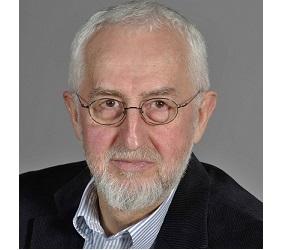"Verifying the Iran Nuclear Deal"

Ernie Regehr, O.C.
Commentary by Ernie Regehr, O.C.
from DisarmingConflict.ca
July 24, 2015
Verification has rightly become a key focus in assessments of the Iran nuclear deal – or the Joint Comprehensive Plan of Action (JCPOA). Thus, verification became the primary theme when US Administration officials defended the deal before primarily Republican critics at the Senate Foreign Relations Committee.[i] The central tactic of the critics is to focus on the exceptional provisions related to inspections of Iranian military sites (sites without any declared nuclear materials present), and then to imply that those provisions characterize the entire verification package.
Verification is indeed the critical element of the JCPOA, so it’s important understand what it involves. In a recent Globe and Mail commentary, two seasoned Canadian commentators, former diplomat Derek Burney and Professor Fen Osler Hampson,[ii]offered the blanket claim that the “verification provisions are clouded by time delays and a tier of review procedures that smack of obfuscation.” It’s a characterization that distorts the process for even that small minority of cases involving sought access to military sites, and it becomes an egregious misrepresentation when they go on to imply that the core verification regime of the JCPOA involves delays and complex procedures by which inspectors gain access to relevant sites.
In fact, verification at all Iran’s nuclear sites (that is, sites where nuclear materials and technologies are present and where the need to verify non-diversion is most acute) is immediate, ongoing, and comprehensive. The means by which inspectors ensure that nuclear materials and technology are not diverted for weapons purposes are defined by a safeguards agreement with the International Atomic Energy Agency (IAEA). The arrangement guarantees IAEA an ongoing presence and working space at all nuclear and related sites. Constant monitoring of sites includes sealed electronic sensing and video devices, and inspections will now follow the enhanced monitoring regime under the IAEA’s Additional Protocol, which includes short notice inspections (in some cases less than two hours) of suspected nuclear sites for the purposes of environmental sampling.[iii]The IAEA’s staff complement devoted to Iran inspections will be raised to 130-150, a virtual tripling of its capacity.[iv] All nuclear facilities, beginning at the uranium ore production stage, are immediately accessible and will be continuously monitored. Through forensic accounting, the IAEA will verify that no nuclear material is diverted. There are no delays built in, and no negotiations are required to gain access. Continue reading at DisarmingConflict.ca...
Ernie Regehr, O.C. is Senior Fellow in Arctic Security at The Simons Foundation, and Research Fellow at the Institute of Peace and Conflict Studies, Conrad Grebel University College, University of Waterloo.
DisarmingConflict.ca is an occasional column by Ernie Regehr which explores the initiatives, policies, and international rules that are designed to fulfill the United Nations’ Charter pledge to control and reduce arsenals and to minimize and resolve armed conflict. Article 26 mandates the Security Council to establish “a system for the regulation of armaments” as part of a larger effort to “promote the establishment and maintenance of international peace and security with the least diversion for armaments of the world’s human and economic resources.”